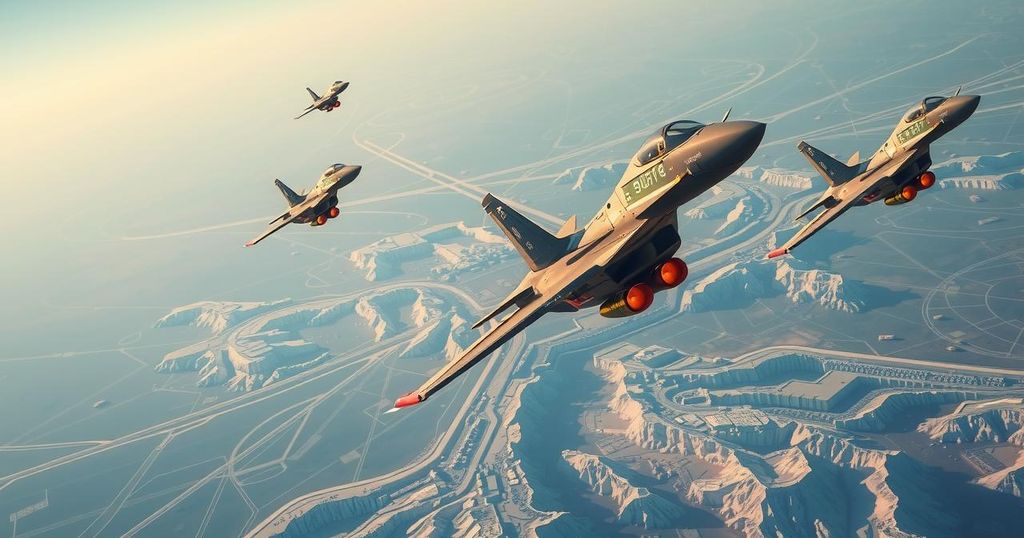Israel’s Air Force has established significant air superiority in the Middle East, particularly in the wake of Syria’s military collapse. This has allowed the IAF to operate effectively against Iranian targets, with analysts stating Israel now has “open skies to Iran.” The recent operations underscore Israel’s intent to maintain military dominance in the region despite potential future complications from external powers, such as Turkey.
In recent years, Israel’s Air Force (IAF) has showcased its military predominance within the Middle East, particularly following the disintegration of Syria’s military capabilities. This transformation has afforded Israel unparalleled freedom of movement and strike capability towards its adversaries, most notably Iran. As analysts noted, Israel now operates under “open skies to Iran,” permitting its aircraft to target Iranian interests with unprecedented freedom.
The IAF, recognized as the foremost aerial fleet in the region and bolstered by advanced American-made aircraft and munitions, has established this dominance by neutralizing a substantial array of Russian and Iranian defense systems. During a period of heightened conflict initiated by the brutal October 7, 2023 attacks by Hamas, the IAF executed a series of extensive military operations, destroying critical air defenses and targeting long-standing foes, including Hezbollah in Lebanon.
In the aftermath of the Syrian regime’s collapse and its subsequent request for Israel to maintain restraint to avoid further military destruction, opportunities arose for the IAF to obliterate the majority of Syrian air defense assets. With approximately 600 aircraft, including a prominent fleet of F-16s and the advanced F-35 stealth jets, the IAF continues to significantly bolster Israel’s defense against its larger Arab adversaries, reminiscent of its advantages in the 1967 Six-Day War.
This strategic edge is underscored by recent operational maneuvers which allowed Israeli aircraft to engage targets not only within Syria but also deep inside Iranian airspace. Experts have corroborated that such engagements are indicative of an emergent strategy that allows for more aggressive posturing against Iran, especially as Syrian defenses are greatly diminished. As observed by analysts, should Israel maintain this operational tempo, it could reconfigure the regional balance of power, offering them increased latitude in executing military operations.
The context of this discussion revolves around the Israeli Air Force’s recent strategic advancements and its implications for regional security dynamics in the Middle East. With Syria’s military infrastructure effectively incapacitated, Israel has capitalized on this situation to enhance its military operations, particularly against Hezbollah and Iranian targets. The historical precedents of Israeli air supremacy dating back to crucial conflicts like the Six-Day War underpin the current strategic posture and capabilities of the IAF. The evolving geopolitical landscape, alongside the collapse of established military alliances, necessitates an understanding of Israel’s enhanced freedom in conducting aerial operations.
In summary, the Israeli Air Force has achieved remarkable air superiority following the disintegration of Syrian defenses, aligning with its long-standing reputation as the premier aerial force in the Middle East. This transformative period allows Israel the latitude to conduct military operations against its adversaries, particularly Iran, with increased efficiency. However, the permanence of this advantage remains contingent on the geopolitical landscape and the potential resurgence of Syrian military capabilities, which could alter existing dynamics in the region.
Original Source: www.businessinsider.com






